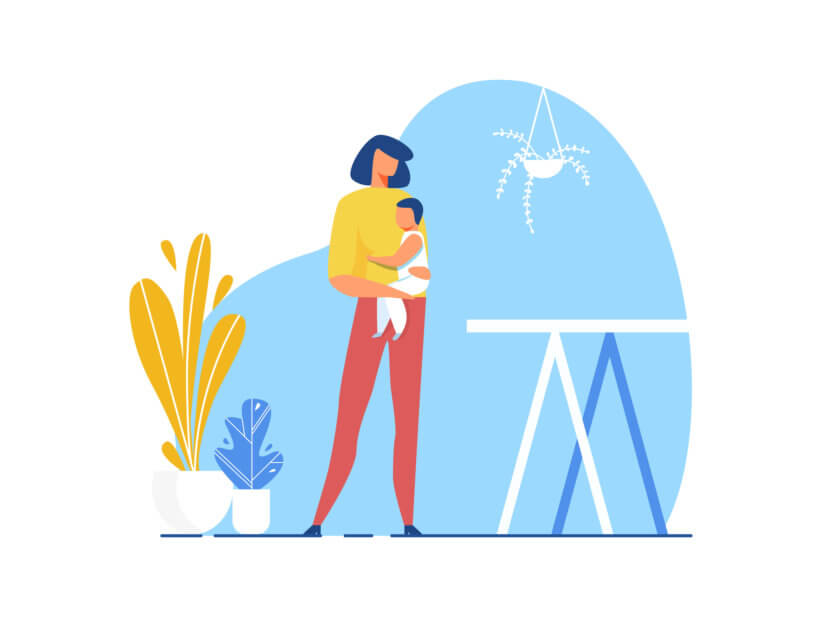Each year, thousands of children are seriously injured in car crashes. Proper use of car seats helps keep children safe, but with so many models available, choosing one can be overwhelming.
So, when picking out a seat, here are some things to keep in mind:
Rear-facing
To help prevent injuries in an accident, the American Academy of Pediatrics recommends that all infants should ride facing the rear of the car — from the ride home from the hospital until your child is 1 year old and weighs at least 20 pounds.
There are two types of rear-facing seats: infant-only seats and convertible seats.
Infant-only seats:
• Small with carrying handles
• Sometimes can attach to a stroller
• Used only for travel — not for outside the car
• Used for infants who weigh 22–35 pounds
• May come with a base that can be left in the car. The seat snaps into and out of the base so you don’t have to install the seat each time you use it. Additional bases can be purchased for other vehicles.
Convertible seats
• Can be used rear-facing, then converted to forward-facing for older children. This means the seat can be used longer.
• Are bulkier than infant seats, and do not come with carrying handles or a separate base.
• Have higher weight and height limits than infant-only seats, which make them ideal for bigger babies.
• Have two types of harnesses, a five-point harness or an overhead shield.
Forward-facing
Once your child has reached the maximum size allowed for her infant-only seat, she can ride forward-facing in a convertible seat with a harness. She should ride this until she outgrows it — usually around 4 years old and about 40–80 pounds.
There are five types of car safety restraints that can be used forward-facing:
• Convertible seats: Seats that convert from rear-facing to forward-facing seats.
• Forward-facing only: Can be used forward-facing with a harness for children who weigh 40–80 pounds.
• Combination seat with harness: Can be used forward-facing with a harness for children who weigh up 40—80 pounds, or without the harness as a booster from 80 to 100 pounds.
• Built-in seats: Some cars come with forward-facing seats built in. Weight and height limits vary. Read your car’s owner’s manual or contact the manufacturer for details about how to use these seats.
• Travel vests: These can be worn by children between 20 and 168 pounds and can be an alternative to traditional forward-facing seats. They are useful for a car with lap-only seat belts in the rear, or for children whose weight has exceeded that allowed by car-safety seats. These vests may require use of a top tether.
Booster seats
Booster seats are for older children who have outgrown their forward-facing car-safety seats. It is best for children to ride in a seat with a harness as long as possible, at least till 4 years old. If your child outgrows her seat before she’s 4, consider using a seat with a harness approved for higher weights and heights.
Signs your child has outgrown her car-safety seat:
• She reaches the maximum height allowed for her harnessed seat. These limits are listed on the seat and also included in the instruction booklet.
• Her shoulders are above the top harness slots.
• Her ears have reached the top of the seat.
Booster seats are designed to raise the child up so that the lap and shoulder seat belts fit properly. High-back and backless booster seats are available and do not come with harness straps — but are used with the lap and shoulder seat belts in your vehicle, the same way an adult rides. Booster seats should be used until your child can correctly fit in lap and shoulder seat belts. Booster seats typically include a plastic clip or guide to help ensure the correct use of the vehicle lap and shoulder belts.
Just seat belts
Seat belts are made for adults. Your child should stay in a booster seat until adult seat belts fit correctly (usually when the child reaches about 4-ft-9 and is between 8 and 12 years old). This means:
• The shoulder belt lies across the middle of the chest and shoulder, not the neck or throat.
• The lap belt is low and snug across the upper thighs, not the belly.
• Your child is tall enough to sit against the vehicle seat back with her knees bent without slouching and can stay in this position comfortably throughout the trip.
Other points to keep in mind when using seat belts:
• Be a good role model. Make sure you always wear your seat belt. This will help your child form a lifelong habit of buckling up.
• Always read and follow the manufacturer’s instructions. If you do not have the manufacturer’s instructions for your car-safety seat, write or call the company’s customer service department.
Source: “Car Safety Seats: A Guide for Families 2010” (Copyright © 2010 American Academy of Pediatrics)





















